
Marc Trujillo
“In theory, “affirmation” refers to every discourse, such as positivism, that silences the negative, the dark, the inassimilable, or the contradictory nature of the real. In practice, “affirmation” designates reconciliation with the world as it is, submission to so-called reality, moral resignation, political defeatism, and approval of the status quo in general.”
Theirry De Duve (Aesthetics at Large: chapter 7 Resisting Adorno, Revamping Kant)
“…let’s do ugly non-art pictures, let’s not be good. Let’s not learn from others. No talent is the talent.”
Edith Schloss (Letter to Jean-Michael Basquiat)
“I want to be a machine.”
Andy Warhol
What art means, what that word means, is a question that no longer has any sort of coherent answer. Not because there is no art, but because the social context for a public relationship to art has been largely lost.
Maybe not lost so much as a system of capital that is in crises, and a society of ever greater inequality, has meant that for painting, for *fine arts*, what exists now is akin to medieval Church dynamics — except it is a church of the solipsistic.
“Realism is . . . concerned with the artist’s perception of objects in space and their translation into iconic, or faithful, signs. However, Pop art deals with material that already exists as signs: photographs, brand goods, comics, that is to say, with pre-coded material.”
Lawrence Alloway (Popular Culture and Popular Art)
The insistence on a difference between realism and pop-art was a bit later to be tested by finding distinctions between Post-Pop and Pop. (Post Pop was expressed in more realistic technical styles). What matters here is only that suddenly in the contemporary western world the idea of realism is contested in new ways, I think. And my sense is that this has occurred over the last twenty years (roughly) where a significant change has been happening. I wrote a lot about Jonathan Beller’s new book (and I know many people found Beller very tough to get through and fully grasp — which it is, but arguably that is why it has such import) and how the invention and development of photography was built upon the assumptions and ideology of white supremacism and the European conquest of much of the planet. Over the last twenty years, though, the digital and electronic mass media has taken on its own history. We have lived long enough under the shadow of the giant telecom and social media platforms, and mass surveillance and data mining, to be able to experience it and ourselves within its historical continuum.

Rackstraw Downes
In the 1950s there was a good deal of theory accompanying the huge marketing of the *future*. It was often a Disneynification vision of a *tomorrowland*. It was The Jetsons (which actually premiered in 1962) or a kind of very white dreamscape of antiseptic labour saving appliances and it was underscored, always, with a profound trust in technology and kitsch science. Science in fact became not science but a pseudo cult of positivism crossed with Madison Avenue. That dream of a future has been inverted today, and there is a kind of anti-future being sold, but sold under the sign of a filmic vision of apocalypse. The alarmist environmental vision of submerged cities, mass desertification, and above all else a planet of too many people is now a normalized secondary background narrative. I read recently that immigration centers built for a hundred or so prisoners (sic) hold upwards of nine hundred. This level of overcrowding exists in state prisons, too, across the country. The vision of the planet then, is one that begins to resemble an overcrowded holding tank in an ICE detention center.
Running alongside the white supremacist nightmare is an updated vision of technology as our savior. Netflix has a new film due out, I am Mother. It is a bit like The Terminator in one sense, with machine parenting viewed as superior to the human version. Such projections have a kind of weird basis in some unconscious recognition of both actual defective caregivers and an unconscious (or maybe just conscious) recognition of fertility rates dropping dramatically across the Western world. As a semi side-bar note…speaking of Netflix… one could read this and ponder just how its all possible. https://www.vulture.com/article/best-netflix-original-movies.html
Part of this entire discussion has to do with the loss of public education. The loss of all education, actually. Recently I had a conversation with educators in Norway who were expressing how students now (high school) cannot follow verbal instructions. They can barely follow simple written instructions, but verbal instructions seem impossible for them. Nor can they find the means to ask for clarification because they don’t know what it is they are lacking in information.

Fairfield Porter
The U.S. military shares the dream of a Jetson’s style future. A useful reminder of the delusions involved in this can be found in Jacob Levich’s 2007 piece here.
Norbert Weiner’s 1948 book Cybernetics marked a sort of watershed in thinking about the future. It also influenced fine arts and painting and more, it heavily influenced art criticism.
“John McHale,co-convenor of the second series of seminars organized by the Independent Group, validated both Alloway’s and Riesman’s understanding of the mass media’s essentially pragmatic role. In his view, the more complex function of mass communications is that of providing: “‘usable images,’ ‘configurations of human experience,’ [and] ‘symbolic constructs of reality,’ which enabled man to locate in, and deal with, his environment – both internal and external.”
Sylvia Harrison (Pop Art and the Origins of Post-Modernism)

Ed Dugmore
“At the limit of this process of reproducibility, the real is not only what can be reproduced, but that which is always already reproduced.”
Jean Baudrillard (Kellner’s Baudrillard)
“The industrial capitalist mode of production inseparably enmeshes the state with a definitive character of capital—policing the social order. The state disciplines labor and creates a disciplinary society. The state’s role remains fundamental because it defines private property. By defining private property through law, the state becomes a separate entity, apart from civil society (Marx and Engels 1846). “
Geoffrey Skoll (Social Theory of Fear)
It was Gramsci who theorized about an extended state. Government, but also church, unions, and especially institutionalized culture. One of the things that has occurred (or occurred more dramatically) over the last twenty years is the merging of mass culture and state, of entertainment and social control.
“By the 1980s, it had turned the tide against equality, democratic control, and public welfare. That success became symbolized by the Reagan presidency, and the Thatcher premiership, and global and domestic neoliberal political- economic policies. Neoliberalism had two measurable effects among the metropolitan ruling class. With an uptick in the rate of profit, they regained and expanded unequal distribution of income.( ) An important part of the elites’ counteroffensive depended on the popular and political construction of crime and fear of crime. Barry Goldwater had first raised it as a national campaign issue in 1964, but Nixon capitalized on it. On the eve of 9/11, Americans believed interpersonal street crime presented a major threat (Altheide 2002), and they generally supported increasingly repressive and invasive policing with exceptionally harsh sentencing (Beckett 1997; Beckett and Sasson 2004; Glassner 1999).”
Geoffrey Skoll (ibid)
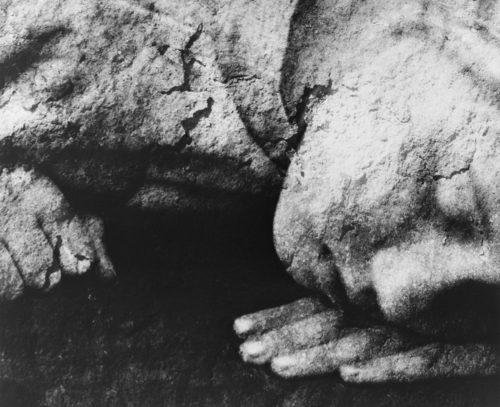
Anne Ferran, photography.
The U.S. became the nation of mass incarceration. And this coincided with an enormous uptick in jingoism from Hollywood. The arc began with Dirty Harry, but the Rambo franchise cemented it. Dario Mellosi makes a congent observation (following Walter Benjamin actually) that “[i]t is the representation of crime, much more than the repression of crime—as we believed in the 1960s—that plays a key role in social control.”(Mellosi: Transcarceration: Essays in the Sociology of Social Control. Edited by John Lowman 1987 ). Unsurprisingly the ascension of pop (Warhol and Lichtenstein, Wesselmann, Allen Jones, et al) coincided with new government strategies of population management. Public schools, of course, since at least the start of the 20th century, in the U.S. anyway, emphasized waiting in lines, waiting your turn, following strict codes of behavior. The vision that came out of this was aligned with simplified personal narratives, the subjective interpretation of the world was simple and unambiguous — and by the post WW2 era the Jetson/Disney vision of a clean and wholesome technological utopia was echoed by Warhol despite his ironic reproduction of commodity images. It was an irony that I suspect was functionally silent. Warhol may actually have been much better than he seemed or seems. (like the old joke about Wagner, ‘he’s better than he sounds’). But in the case of Warhol it is likely true. And in the case of a Jasper Johns it is very much true.
And this is very interesting, I think. Painters today, such as Rackstraw Downes and Marc Trujillo, the new figuration is actually nothing like hyperrealism. Trujillo, who teaches at Santa Monica college last I looked, and who is a big admirer of Downes, paints what are actually almost anti ironic paintings of modern commodity culture. Downes, too, paints this realistic landscape that is never quite really realistic. (reproducing Downes here does him a disservice. In person these large canvases are much more impressive and disturbing). Both of these painters though are working against that idea of imitating the machine, imitating photographic images. They paint realism as if the camera never existed. And consequently the uncanniness of their work is strangely mystical almost. Looking at Trujillo and even more, at Downes, is to experience something akin to Kubrick’s 2001 Space Odyssey, with all the hand painted stars and planets and spaceships. There is an uncanny at work in the Kubrick which was just before the onslaught of CGI.

Meindert Hobbema (The Aveneu at Middelharnis, 1689)
“In her column in The Nation, Patricia Williams (2001 cited in Welch 2006) referred to a CNN poll taken shortly after 9/11, which showed that 45 percent of Americans would not object to torture if it provided information about terrorism. Public opinion has changed little subsequently. In contrast, more than 80 percent of people in Western Europe reject torture under any circumstances (Pew 2007:25; World Public Opinion 2008). Revelations of torture—including graphic imagery from Abu Ghraib, televised on 60 Minutes II April 28, 2004—became public in the intervening years. Nonetheless, the stability of sentiment suggests a deep-seated view- point.”
Geoffrey Skoll (ibid)
The above quote touches on an important aspect of U.S. culture. Again, over the last twenty years there has been a shift to a cultic frame of mind. And it is a cultic thinking that has deep ties to sado/masochism and which is expressed in forms of entertainment and leisure activities. Fine arts has remained somewhat outside this, though not entirely. The mass propaganda coming out of Hollywood is deceptive, however. There are two branches of influence, as it were. One is overt proto-fascistic titillation, sexual violence and militarism. The second is the far more pernicious expression of contentment and pleasure, especially as it appears in *prestige* films. The stuff that is partly, always, about real estate and clothing and style. What I read one critic describe (favorably) as *aspirational*. Big Little Lies, 2017 HBO, is a prime example. Shot as if it were the retarded grandchild of Douglas Sirk, crossed out with some Telenova by way of a Sotheby’s real estate listing, the show is a soap opera version of film noir, with most of the noir removed. It is also cast with recognizable Hollywood insider B listers. But of a certain stripe. The real story is real estate, is big homes with views of the Pacific ocean, and with exclusive elementary schools and ambitious husbands. The alibi is always inserted, the poor girl who is an outsider but isn’t, the infidelity and the abusive husband.
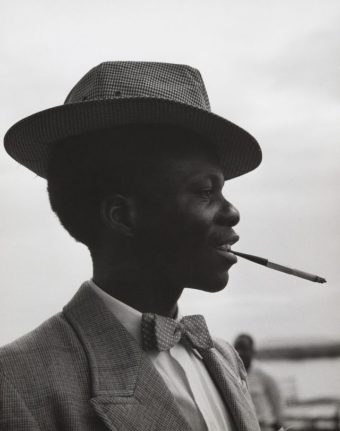
Cas Oorthuys, photography.
“Sometimes Adorno will attempt to redeem the abstractness of modernism directly; for example, he argues that abstractness in art signals art’s withdrawal from objective reality on the grounds that nothing remains of the objective world save its death’s head: ‘New art is as abstract as the real relations among men.'”
J.M. Bernstein (The Fate of Art)
“The essential difference between sadism and masochism is thus (1) the shift from another person to oneself (shift of object) and (2) a shift from active to passive.87 That means that in both sadism and obsessional neurosis the division between ego and others remains much more clear than in masochism. After all, in obsessional neurosis others are excluded from the self-punishment. The obsessional neurotic needs nobody else in order to torture himself. The sadist wants to seize and torture someone else, thus clearly not himself. In masochism, however, another person is very much involved in the self-punishment.”
Herman Westerink (A Dark Trace; Freud and the Sense of Guilt)
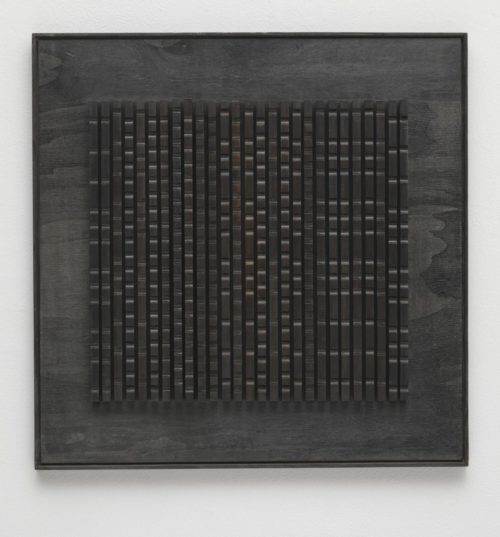
Ivan Picelj (1962)
The cultic is today something that has been, at least in part, shaped by the very sophisticated marketing of fear and anxiety. The inverted future, the anti-Jetsons: and Francois Debrix (quoted by Skoll) wrote after 9 11…
“The war on terror . . . is a violent rejection of the unthinkable and intolerable. It is a disgusting revulsion against something (that America calls ‘terror’ or ‘evil’) that does not make sense, that was/is still horrifying, that allegedly comes from ‘elsewhere’ (although it was and may still be within ‘us’), that cannot be identified as a traditional object of geopolitics…As media pundits and intellectuals of statecraft have reminded Americans, the war on terror is a different war, with no really distinguishable home and away fronts. “
(Tabloid Terror: War, Culture, and Geopolitics)
The future is, then, tied in with this escalation of sadism, and with all the latent sadism of nostalgia and sentimentality, of kitsch syrupy painting and TV soaps — and with the normalizing of a reconstructed future, after the apocalypse. I can’t help but notice that the figure of Greta Thunberg has seemed so perfect as the Joan d Arc of environmentalism. She is special (autistic and not neurotypical) and she has magic powers (seeing carbon dioxide, and no doubt more is to come). Whether Greta fades quickly from public memory is beside the point, for this is the future code embodied in a pubescent European youth — blond and cherubic. The future, the anti Jetsons future, is one tinged with the archaic and primitive. And there is a tension, then, with the idea of science. (again I am reminded of Beller, here), for generalized *images* of science are remote, really, from actual science.
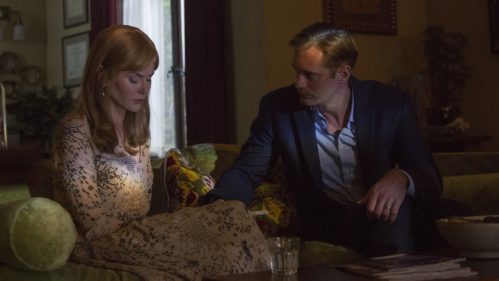
Big Little Lies (HBO, 2017, created by David Kelley)
” ‘I believe in science’ is an homage given to science by people who generally don’t understand much about it. Science is used here not to describe specific methods or theories, but to provide a badge of tribal identity. Which serves, ironically, to demonstrate a lack of interest in the guiding principles of actual science.”
Robert Tracinski (Why I Don’t Believe in Science, essay The Bulwark, 2018)
The new apocalyptic future, it has occurred to me, no longer inspires dread or fear. It is the new pastoral, in a sense. None of the studio TV or film product (or not very much, anyway) paints a future without hope. It pays lip service to the loss of civilization (but the audience today has no particular interest in preserving civilization) but the simple agrarian future is one that lines up with the frontiersmen mentality of most of America. These are profoundly western capitalist-centric shows, without much concern for what happened to Central America or India or China or the Arab world. This is about a white future.
But there is another aspect, too. For this notion of future is now a kind of repurposing of the revisionist past. The US entertainment industry rewrote the past and now samples that rewritten past to construct a fake future. Throughout this, though, a growing authoritarian state increases restrictions on daily life. And these restrictions serve to further emphasize the class demarcations. Many Americans are moving to Mexico for example. But this means many Americans who have some money are moving to Mexico. The poor stay and work temp jobs alongside those who fled Mexico (and Central America) in order to feed their families.

Marc Trujillo
“Freud emphasized more strongly that human drives are not exclusively directed towards gaining an advantage. He simultaneously increasingly emphasized the formation of the conscience via identification. This shift was announced in Thoughts for the Times on War and Death, where he noted that as morality was lost, raw forms of hate and disgust surfaced. The question this calls forth is: how can morality be so easily lost?”
Herman Westerink (ibid)
“…the painter paints a picture rather than what it represents. Implied here is the idea that every work of art spontaneously aims at being identical with itself, just as in the world outside a fake identity is everywhere forcibly imposed on objects by the insatiable subject. Aesthetic identity is different, however, in one important respect: it is meant to assist the non-identical in its struggle against the repressive identification compulsion that rules in reality. “
Theodor Adorno (Aesthetic Theory)
Of course Freud saw the denial of death as a significant factor in the flattening out of lived experience (which leads to neurosis). But in some sense today the screen addictions of the populations of the West is a form of belief in immortality. The more life is lived on screen, the more the identification with society and others is vis a vis the screen, the more death is repressed — for nobody dies on screen. Humphrey Bogart is still alive. The bourgeoisie of Freud’s Vienna gravitated toward psychoanalytic models for the mind partly to help account for the societal trauma of the period, and german expressionism is a kind of validation of Freudianism. This was a cultural navigation through narcissism and human capacity for cruelty and organized destruction.

Salvator Rosa (1600s)
There is, then, I think, another inversion going on today. This deep cultic denial is tied into a world in which daily life is ever more repressed, and in which the compensations of screen technologies is encouraging a more and more superficial model for life. There is a clear connection, foundationally, between racism and Imperialism. And both under the manufacturing banner of capitalism. Today the non white populations of the U.S. (and certainly this is true in France, too, and in a different form England) are directly targeted by state strategies for control (and elimination). This began in its current phase under Nixon. And it only grown.
“…ghettos— whether Black or Latin in the United States or the immigrant banlieues of Paris—create imprisoning residential barriers. Especially in the United States, the ghettos suffer from policing strategies that turn them into catchment areas for filling the nations prisons, not unlike the Nazi ghettos did for the concentration camps.”
Geoffrey Skoll (ibid)
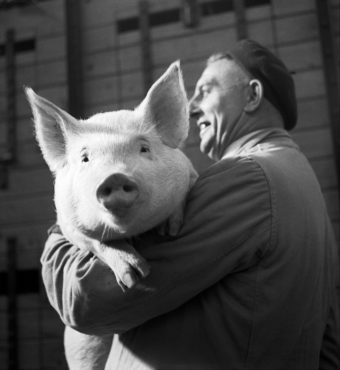
Martien Coppens, photography. (1956)
The representation of this is completely absent in Hollywood. The p.o.v. is always that of the authority structure, which is humanized and made heroic in the face of the threat of invasion. This is all pretty well established. So the new future is one without class, essentially. There is no underclass for they have conveniently been eliminated — though how and by what means is always unclear. The new faux-environmentalism is increasingly volkish in its imagery and the tenor of archaism is growing, too. There is a kind of ambivalence with regard to science throughout this.
“The curse of irresistible progress is irresistible regression.”
Horkheimer & Adorno (Dialectic of Enlightenment)
There is an acute racism, in short, operating in new Green discourse. And operating behind this discourse is the entertainment vision of this new pastoral. There is, though, in the best new art, suggestions of resistance. It is really no longer useful to juxtapose abstract and figurative because the authentic work today in either category, transcends those designations. There is an ever shrinking audience that can actually tell the difference, though. And there is also very much less good writing about art.

Walter De Maria
“To paraphrase Walter Benjamin (who was describing an earlier era), for us at the threshold of the twenty-first century, the out-of-date ruins of the recent past appear as residues of a dreamworld. If his characterization of the turn of the last century is true as well of our own time, this should come as no surprise. The disintegration of cultural forms is endemic to modernity.”
Susan Buck Morss (The City as Dreamworld and Catastrophe)
Benjamin noted that exploitation was not only economic but cognitive. He was writing of the factory worker but today the cognitive exploitation is hugely intensified. Benjamin described the ‘sealing off from experience’ of the worker, and that daydreams were curtailed.
“The dialectical reversal, whereby aesthetic perception changes from a cognitive mode of being “in touch” with reality into a way of blocking out reality, destroys the human organism’s power to respond politically…”
Susan Buck Morss (ibid)
For Benjamin there developed under capitalism a kind of anti-aesthetics. It is interesting that in this short essay of Buck Morss she mentions the role of photography at the turn of the 20th century. That photography allowed the metropole, Europe, to view the exotic Orient (sic). Which was true, of course, but what is missed here is exactly what Beller illuminated in The Message is Murder. The colonial racialist foundation of optical discoveries in this era, most especially photography. And it is useful to view both abstraction today and the figurative in light of a kind of rejection of optical technology. Hiroyuki Hamada (who I should note is a personal friend) as much as Rackstraw Downes or Marc Trujillo, is returning to something like sincerity in his work. But in an age which has erased sincerity, in the age of post irony (as it were) the sincere must be dialectically approached.

Hiroyuki Hamada
“The rulers themselves de not believe in objective necessity, even if they sometimes call their machinations by that name. They posture as engineers of world history, Only their subjects accept the existing development, which renders them a degree more powerless with each prescribed increase in their standard of living, as inviolably necessary. Now that the livelihood of those still” needed to operate the machines can be provided with a minimal part of the working time which the masters of society have at their disposal, the superfluous remainder, the overwhelming mass of the population, are trained as additional guards of the system, so that they can be used today and tomorrow as material for its grand designs. They are kept alive as an army of unemployed.”
Horkheimer & Adorno (ibid)
Horkheimer and Adorno wrote that sixty years ago. One of the changes is that this army of unemployed is going to have to be culled. The paradox is that the transferring of blame to the victims of industrial Capitalism comes at a time when, in reality, the white populations of the West face demographic collapse.
But I want to return briefly here to the relationship between narcissism and cultic thinking. Freud made interesting connections between narcissism and schizophrenia. And without going into great detail here the relevant aspect is connected to what Paul Nacke (in 1899) described, in speaking about criminal youth, as the creation of the self as an idol that must be worshipped.

Lois Dodd
“This degeneration can later develop into criminal behaviour. In general it is true that “the youth sees himself as an idol”, an idol that others must worship. The idea of grandeur is generally expressed in a “limitless vanity and overestimation of the self”: “He wants and must rule”. He hates those who resist or fail to recognize him, the Übermensch. He only acts in accordance with his own moral framework.”
Herman Westerink (ibid, quoting Paul Nacke)
The screen addicted culture of selfies and social media is a constant tinkering with the creation of an idol. And the insistence on the photographic image of the self is a curious aspect here that obviously Nacke was not aware of. The creation of media phenomenon (such as Greta, but there are many examples, including celebrity gossip etc) is going to be tied into the persistent archaism of contemporary media creations. And I suspect this new archaic comes in two forms, or two registers. One is just the Lord of the Rings infantilism, the sorcery of children’s books and fairy tales. The other is the actual regression to tribal violence and extreme exclusionary sensibilities. A return to strict expressions of class hierarchy and fatalistic oaths of allegiance.

Roger Herman
“The proscribing of superstition has always signified not only the progress of domination but its exposure. Enlightenment is more than enlightenment, it is nature made audible in its estrangement. In” mind’s self-recognition as nature divided from itself, nature, as in prehistory, is calling to itself, but no longer directly by its sup- posed name, which, in the guise of mana, means omnipotence, but as something blind and mutilated. In the mastery of nature, without which mind does not exist, enslavement to nature persists.”
Horkheimer & Adorno (ibid)
Now when Freud wrote of the ‘ego ideal’ he made clear the role of conscience — the critical agency that measures the ideal against the self is the conscience. In a society in which the conscience is withered (the conscience is developed vis a vis the parents) then there is no measuring agency left. The idol or ego ideal demands huge amounts of psychic energy to sustain. The new future, the anti-Jetsons future, this new pastoral of post annihilation and apocalypse, is a world of idols with nobody to worship them.

Ernst Haas, photography.
The globe continues to be proletarianized. The deep seated and indelible racism of white america is most acutely expressed in the ruling elite. Which belies the cliches of a racist underclasss of red neck NASCAR loving white supremacists. The actual number of white supremacists is relatively small. There is another class of small business owner, which shrinks all the time, and is mostly white, and is mostly default racist. And there is a managerial educated class of white liberal who are also racist but work very hard to not so self identify. And much of the new Green movement is from that educated class. The new archaism is tied this class and there are contradictions at work, to be sure. For these are also the non scientists who “believe in science”. Much of the left are also prone to this kitsch science. None of the people I know who espouse these pro-science beliefs are themselves scientists. In fact none of them know much of anything at all about science.
At the top of the class ladder is the sadistic and self loathing ruling elite. And its curious because if one goes to the real estate listings for any luxury agency –Sotheby’s or James Edition or Global Mansion, you will find various fluff pieces on which celebs are or have bought what luxury penthouse or villa. And as an example…I read a piece about the drummer for Metallica….I mean I can honestly say I’m pretty sure Ive never heard a single song by Metallica. And this is the DRUMMER. And he has put up for sale his twelve million dollar houses overlooking San Francisco and the Tiburon Hills. That may fall short of Trump’s Mar Lago, but that is still pretty elite real estate. Who is this person? Now, as another side note, the Showtime series Billions, about an aggressive Hedge fund manager, featured Metallica as a guest star. The Hedge Fund king, played by Damien Lewis, takes his friends to Quebec (go figure) to see Metallica and hangs backstage with the band. I confess a certain semiotic confusion here, but of one thing I feel certain, the neutralization of rock n roll, that began almost as soon as it started sixty years ago, has now reached completion. Its also interesting that it was this same drummer, Lars Ulrich, who sued Napster for playing his music for free (and turned over the names of three hundred thousand Metallica fans…so I guess hanging with a hedge fund king actually makes sense). It should be added that Billions represents something of a treatise on the crises of white masculinity. But thats for another time.

Casey Ruble
I want to finish up here with Adorno, writing in Negative Dialectics, about the law.
“Law is the primal phenomenon of irrational rationality. In law the formal principle of equivalence becomes the norm; everyone is treated alike. An equality in which differences perish secretly serves to promote inequality; it becomes the myth that survives amidst an only seemingly demythologized mankind.”
This quote is often criticized … mostly by academic readers of Adorno. One of the most consistently recurring themes in art criticism today is diversity, or multiculturalism. One cannot open an art magazine and not read about queer artists or artists of color, or Asian women artists or whatever. The art is often highly reactionary, or just solipsistic. Its also invariably institutionally influenced. This is trained art product. And this is the same promotion of inequality that Adorno noted above. And when I write about sincerity in art and that this is only possible dialectically, I feel this quote has relevance to that, too.
“At the technological level, when images chosen and constructed by someone e e have everywhere become the individual’s principal connection to the world he formerly observed for himself it has certainly not been forgotten at these images can tolerate anything and everything; because within e same image all things can be juxtaposed without contradiction. The flow of images carries everything before it, and it is similarly someone else who controls at will this simplified summary of the sensible world; who decides where the ow will lead as well as the rhythm of what should be shown, like some perpetual, arbitrary surprise, leaving no time for reflection, and entirely independent of what e spectator might understand or think of it.”
Guy Debord (Comments on Society of the Spectacle)
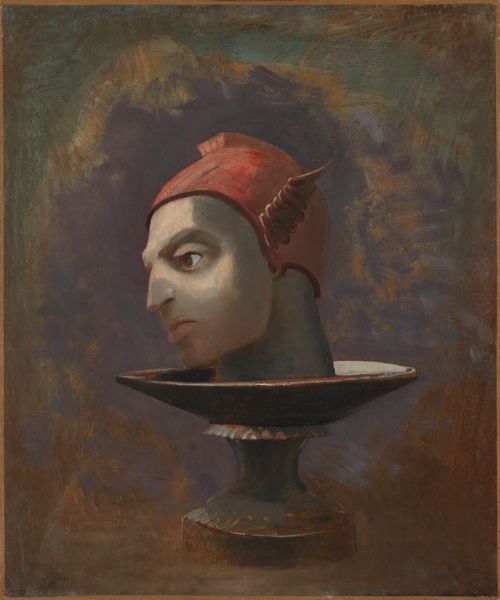
Odilon Redon (1875)
If you wish to donate to this blog, you can use the paypal button at the top of the page. Many thanks to those who have and to those who may choose to do so.

On education….
I was recently talking with a professor of English who works at a Canadian university, and she was telling me that the English department has been having meetings about changing the first year curriculum to adjust expectations for incoming students. She said that a few years ago, they had to lower standards and teach their courses differently because they found that incoming students were no longer able to write like they used to. Now, she said, the concern is that students today not only struggle to write, but we can no longer count on them being able to read.
I find this intolerable that in Canada (where post-secondary education is run like a business and is NOT paid for by the government)–that instructors at the university level are now spending their time trying to teach students skills they should have gotten in grade school. Students are paying thousands and thousands of dollars today to learn things that I learned under the public education system. I was a teaching assistant for a Shakespeare course this past term and I can say with full confidence that my ability to read, think about and write about Shakespeare’s plays was about three times better (or more) than the average second year university student.
What irks me the most is that professors and instructors just keep changing the curriculum and teaching to students with lower and lower literacy rather than making some sort of public stir about this issue. The university institution (at least here, in Canada) is taking billions of dollars from students to teach them what they used to learn as part of public education. This is immoral. I’m completing a PhD at the university right now and when people ask me if i’m going to teach or become a professor, I say “no.” I just don’t believe the way the system operates is at all conducive to teaching, learning, and offering people opportunity to learn how to grow and think creatively and independently. This is a great travesty. The education system itself is a culture of capital, where grades, marks, degrees, and courses passed are “currency,” and where even knowledge itself is thought of as something to be produced, consumed and transported from here to there. Arguments and ideas are “sold.” These metaphors are dangerous and are programming our students to understand knowledge and learning and even SELF in reductive terms.
When I described my perspective of the university system to this English professor, she said that I was exactly the kind of teacher we need in higher education. But of course, I had to point out to her that I would likely never get hired…(the only reason I have done teaching assistant work is because I have a guaranteed TA contract for 4 years of m PhD study).
All that being said….i think this culture within the academic institution is going to shift. It is not sustainable. People are experiencing a lot of depression, anxiety, boredom, loneliness, stress…..and there are people more and more who are fed up with that and are going to start to be unwilling to participate in the system as it is. I think there is hope for positive change.
well its very clear in the universities and high schools in Norway that students have very limited reading and writing schools. The shock this year was that meetings were held because students could no longer listen to complex sentences. Instructions had to be spoken in very simple language and spoken slowly. And in a sense I think you are right about institutions of learning losing credibility. Where that does, though, I don’t know.
I love this post.
The minds are being actively damaged. it’s not that they’re not being taught: without teaching they would have language skills. It’s that their minds are subjected to something that is interfering with their development of language (and reason, and the sense of time, sequence and consequence). And as a consequence language as social product is disintegrating: when I first started hearing “me and him were having a drink” it was like nails on the blackboard. It physically hurt to hear it. Now I am desensitized. I’m 56 and I have started to make errors myself — only on twitter I think tho, and especially when typing on the phone — of grammar that simply would have been impossible 10 years ago as all sounding so unnatural to me. It reminds me of when I was living in Greece and my neighbor spoke very little English but much more than I could speak Greek: and she had her own idiolect and I began to speak in her idiolect. It was easier for me to speak English her way than for her to speak mine, and I couldn’t speak to her in Greek. So I would say “no cook today” to mean I’m not cooking today. I am old enough to have learned to spell: but I find I have lost spelling too. The fragmentation that affects the kids language is generalized to many text forms. It applies to complexly edited visual media also. Last year there was a psyop that was supposed to be a “hidden camera” expose of AIPAC. People “of a certain age” like me start to watch this knowing it is supposed to be a hidden camera, and it is comical and disorienting to see there are 7 different angles of coverage, so we know it’s fake. It doesn’t require any particular attention: it’s intrusive; it can”t be missed — you begin in the head that the camera is hidden and then it is jumping around: it’s obvious and disconcerting. But people raised on screens literally don’t notice this. And somehow their reception exerts pressure on people who are older, who must be seeing the many angles, and they un-see them. Something has changed in the visual processing. It seems to me that on the one hand, the visual is obviously more dominant in the assemblage of sense than ever before (people no longer like to speak on the phone: it feels too intimate and intrusive. It’s not just that the voice/audio element is too intimate, because they can do video skype. It’s the voice without the visual element.)
From a reference in Beller I got this early Jonathan Crary book _Techniques of the Observer_ (maybe it was his Phd thesis): 1990:
“The formalization and diffusion of computer generated imagery heralds the ubiquitous implantation of fabricated visual ‘spaces’ radically different from the mimetic capacities of film, photography, and television. These latter three, at least until the mid-1970s, were generally forms of analog media that still corresponded to the optical wavelengths of the spectrum and to a point of view, static or mobile, located in real space. Computer aided design, synthetic holography, flight simulators, computer animation, robotic image recognition, ray tracing, texture mapping, motion control, visual environment helmets, magnetic resonance imaging, and multispectral sensors are only a few of the techniques that are relocating vision to a plane severed from the human observer…
…Most of the historically important functions of the human eye are being supplanted by practices in which visual images no longer have any reference to the position of an observer in a “real” optically perceived world.”
I’ve been reading about Courbet, who made the term realism (in French) famous for the visual arts in the early 19th century. It was associated with socialism by both partisans and (the camp of academic painting) opponents and by the latter with “ugliness.” Initially the term had nothing to do with exact mimicry of vision or photographicism or anything like trompe l’oiel, on the contrary. It was principally a reference to choice of subject matter and then to some attitude of frankness and honesty about the artistic practice and its engagement with that matter and the world. So that impressionism ended up being generated within realism itself (its tendency incipient in Courbet and Manet, who were inspired by Spanish renaissance masters, especially Velasquez and Murillo) not as a reaction. But there is just wrangling in the era of Courbet about what realism, which he did adopt as a slogan, might mean. Nobody really knows what they’re saying. Something has emerged as a problem that never was a problem before. It seems to have something to do with commodification and the generalized completed alienation of the sensual world that Marx, who was less than a year older than Courbet, would theorize.
In his day Courbet was considered a “socialist” painter: and now for the past 50 or 80 years art historians puzzle over this to a degree, because yes he was biographically a socialist person, he was a Communard, he had commitments and he was close to Jules Valles and Max Buchon, but in the painting it is really not clear what the judgement of socialism might mean, He didn’t, as a a few of his contemporaries did, really depict say the misery and suffering or the working class; he didn’t really send up the bourgeoisie of show their alienation; his formal innovations (which are really significant and influential) were pretty subtle and even tricky and disguised, so as I read, I’ve been puzzling also. But then I came on some letters and biographical matter from his boyhood when against his will his father sent him to boarding school. He was not a good student but the school was really mortifying the flesh, it was cold and the food was bad and he hated it, but the thing that made it a torture was he wasn’t allowed to smoke. And he was obviously an addict. And every time he tries to smoke, which he does a lot, he gets caught and his pipe is taken away. He describes his symptoms in letters home. And his drawings from this period are no good. Later he is allowed to live in the town in lodging, he can smoke, and his talent blossoms and he becomes a socialist, of a peculiar kind because he still has his elitist postures. Reading between the lines of all this I can see that his epiphanies about socialism have to do wth this experience of being denied his pipe and how he comes to understand this is a kind of imprisonment and its what capitalist society and private property do: they take away the commons and nature and by doing so take away ourselves, our capacities. Later in his paintings, his endless self portraits, he is almost never without his pipe. And he is famous for always having it; everyone at the time remarks on it. I was wondering how he must have felt during the Commune siege: there must have been tobacco shortage. Gong back to Courbet’s very strange oeuvre with this in mind, the socialism suddenly appears: it’s entirely sensual and reparative. It is attempting to restore a relation that capital has destroyed, instead of trying to depict or expose that destruction. It is totally sensual and not theoretical or intellectual. It seems to develop completely oblivious to photography, but in the context of the appearance and proliferation of photography its really more recogizable what’s going on.
Crary in this book, Techniques of the Observer, is also rewriting this dominant history of visuality by shifting the topic from the development of representational (or abstract antirepresational) styles in objects to the re/production / construction of the observer. He starts by noticing a kind of irony in the dominant account of the 19th century where on the one hand art historians focus on the appearance and development of modernist gestures, subjectivity and abstraction, and when looking at this elite progress deem it hegemonic and definitive of the Weltanschauung, and then when looking at photography see it as the apotheosis of the Renaissance perspective and version of verisimilitude, and see it as hegemonic.
“This conceptual division leads to the erroneous notion that something called realism [classical Renaissance perspective] dominated popular representational practices, while experiments and innovations occurred in a distinct (if often permeable) arena of modernist art making.
“When examined closely, however, the celebrated “rupture” of modernism is considerably more restricted in its cultural and social impact than the fanfare surrounding it suggests. The alleged perceptual revolution of advanced art in the late 19th century, according to its proponents, is an event whose effects occur outside the most dominant and pervasive modes of seeing.”
Then he goes on to say basically these disruptions and experiments, so far from indicating the subjective and individualist ethos they are usually taken as adequate evidence of, are on the contrary testifying to the opposite, as they dependent on the construction of “an observer” by a thoroughly hegemonic contrary system (it’s a very dialectical point, somewhat overlapping Deleuze although he incongruously relies more of FOucault, kind of perversely):
“If it can be said there is an observer specific to the 19th century, or to any period, it is only as an effect of an irreducibly heterogeneous system of discursive, social, technological and institutional relations. There is no observing subject prior to this continually shifting field.
“If I have mentioned the idea of history of vision, it is only as a hypothetical possibility. Whether perception or vision actually change is irrelevant, for they have no autonomous history. What changes are the plural forces and rules composing the field in which perception occurs, And what determines vision in any given historical moment is not some deep structure, economic base or worldview, but rather the function of a collective assemblage of disparate parts on a single social surface. It may even be necessary to consider the observer as a distribution of events located in many different places. There never was or will be a self-present beholder to whom a world is transparently evident. Instead there are more or less powerful arrangements of forces out of which the capacities of an observer are possible,”
Not sure I buy it all, or the main thesis, but the book is full of insights and provocative hypotheses. I am thinking about that last para in relation to the discussion here and just refining observer to “reader.”
Let me work backwards a bit. Its interesting the pipe smoking because i have smoked pipes for forty years or so. Cigars too. And of late there is an absolute war against tobacco…especially pipe tobacco. McClelland tobacco in st louis closed this year because they could not keep up with the insane paperwork from the Feds, And they were one of only three sources of real classic purist pipe tobacco. The others are samuel gawith in the Uk…and they are nearly out of business. Gawith is worth googling. They still press their virginia flake on wooden presses from the 19th century. They do nothing in the modern way and hence both cant keep up with demand and second are a target for the EU regulatory police. The last is esoterica (Germain & Sons) who havent made anything in two years so Im guessing they are out of business too. All that is left are a handful of smaller european businesses…..Macbaren, who is awful, and Kohlhase and Kopp in germany and Planta i think. And dan tobacco, which is small and german, too. None are truly comparable to McClelland but they approximate it at least. The point is that i remember when i started…i picked up a pipe because anthony braxton smoked a pipe and i was sort of studying with anthony at the time. And i wanted to be like him. its why i started chess too. And I remember an old store on hollywood blvd, long gone where you could go in and talk to these very generous older men and learn about the art of pipe smoking. Its not easy to learn to do right. And that store was a wonderful old world of masculine ritual and patience and respect. You cant smoke cheap pipes. You cant smoke cheap tobacco. And you have to learn. Someone has to teach you. The best pipes even today are those that were made in the 1940s and 1950s…old Dunhills and barlings and Charatan and then a bit later the italian pesaro school…Castello and Caminetto. They used briar that had been around drying for a hundred years. What that imparts to the smoking is impossible to explain. But the point is that a pipe can last a hundred years…..not a great business model. Its the anti cigarette. And the whole endeavor is about reflection and slowing life down. You puff SLOWLY…..sitting back…relaxing. All of this anathema to modern life. Ok….make of that what you will.
Second….yes, brains are being harmed. Ask any teacher at high school or above. These kids cannot think properly. And yes, I feel it in myself, too. Next..computer generated images…..in film, in the making of architecture, in everything, has done something very strange. I like Crary’s observation. I mean i wrote about visual space a number of times on this blog. Something has happened to how people understand the space around them. Part of this is the loss of narrative skills I think. If you cannot construct a narrative its likely part of the problem is that you cannot place that narrative anywhere. If I am right about religion coming out of theatre, then theatre, that empty space….that stage….that is the scene of something formative (whether freudian or not) and now it is being erased. There is no place from which one can begin a story. Or begin the story of self, somehow.
So yes the visual is severed from the human. And I think once that happens it sets in motion a cascade of other things; the human is increasingly a foggy concept (and this is not totally far from horkheimer and eclipse of reason, actually). The severing of visuality from human planes and the loss of memory..both cultural and personal… means that the story fragments of today have no durability. They mean nothing. Nobody cares much, or for very long. I mean way back the frankfurt guys said visuals were being scanned and not seen, not experienced as they had been prior to the mid 20th century. People were reading./… or not reading, but scanning paintings. And i think all the art criticism of mid century is very wrong. I mean i think greenberg was exactly wrong. I think he was smart but he was 360 degrees wrong almost. Maybe because by then the commodity form had already cast a permanent shadow across everything.
this is excellent….”Then he goes on to say basically these disruptions and experiments, so far from indicating the subjective and individualist ethos they are usually taken as adequate evidence of, are on the contrary testifying to the opposite, as they dependent on the construction of “an observer” by a thoroughly hegemonic contrary system ”
But see this has been an argument of mine for a while. The experience of the socialist, if you will, in coubert is form and not message. There is no socialist content. There is a dialectic made up of space, the human form in space, color and more, technique. And history. There is no courbert without poussin or david. But i do think that quote above is very significant. The construction of an observer. That was beller,too, vis a vis photography. And there was an unavoidable relationship between painters and photography. And its mystified partly because critics want to write about message, or technique, and not about form. The observer of Thomas Gainsborough has to be talked about in terms of class and the role of english imperialism and the gentry…the space of the aristocracy etc. And so courbert is exactly rescuing the space of community and socialist sensibility while gainsborough is erasing everything that is not aristocratic. Im not sure how aware gainsborough was…and i like gainsborough in a perverse sort of way. I think his unconscious projections were very strange, especially toward women. But thats a whole other topic. I will write more soon….
Yeah i agree on this about form, but often form — what you mean by form, which is a dialectical relation to content and doesn’t exist without content — is spoken of as if it were only a part of itself, the abstracted technical elements of the forming acts/work upon the world that end in the artwork. And with Courbet one cannot deny the content per se is a considered and equal part of this sensual reparation, this “rendering” (an apt pun that Derrida deformed): the comparison to Gainsborough is very interesting. I like Gainsborough myself, but I know exactly what you mean tho I couldn’t say exactly how it gives off this proprietary commodifying quality, tho it definitely has to do with what is depicted not just how.There are different ideas of content that could give analyses of their comparisons — both are painting “landscape” and I guess form could be a name for the fundamental differences. But its common now to idealize and reify so you get youth seeing discrete elements like “same content different form”: they are encouraged to overlook the dialectical relation of the living producer to world affecting what is depicted and how. With Courbet the choice of subject matter is the first element of what was deemed his socialism although it was not proletarians at work or bourgeoisie caught in the acts of erotic exploitation or acquisitiveness or idealization, and it wasn’t a Gainboroughsian subtly prettified and domesticated scene meaning to signify an idealized unconquered but ironically owned romantic wilderness. The content per se — the hunters producing the hunt in the recalcitrant wood against the resistance of the wildlife — is doing its fair share of socialist propaganda alongside the subtle interventions in perspective and the 17th c Spanish and Netherlands inspired brushwork that kind of ironically give us the dawn of impressionist techniques., A romantic socialism philosophically — despite his being believed and believing himself to react against romanticism — close to Marx in anthropology but christian and spiritual and anarchisty. He was good friends with Proudhon whom he painted a few times and whom it seems he allowed to put his project into politicized words which really weren’t his own ideas. He wasn’t very good at putting his ideas and his project into words. And I feel that realism was chosen for him by this socialist clique around him. But you mentioned sincerity (that’s a wonderful painting), I think he might had he himself chosen a slogan have chosen Sincerism or something. Something more subjective at base but hinting at a commitment to and respect for what is not the subject, rather than any objective theory of the external and other as “realism” suggested from the start and now even caricatures. with an infinite mise en abyme irony.
Smoking. I was a crazy addict for some years. I could talk about it forever. There is a book a former professor of mine Richard Klein wrote called The Cigarette is Sublime that he wrote as a way of not abandoning his attachments to cigarettes while he was quitting. It’s kind of interesting tho too posty. I have here also another book called Tabac that I have to dig up with good quotes. But here is a bit of one of the great portraits of a smoker in literature (from Patrick O’Brian, _The Surgeon’s Mate_)
‘How have you been coming along, my dear?’ he asked, as they paced by the Captain’s lilies, his pride and joy. ‘Very well, Stephen, thank you,’ she said. ‘I have obeyed you in everything: I have been incredibly good -only one glass of wine at dinner, though there are always vast crowds of people here, which incites one to drink, and no tobacco at all, not even snuff. Stephen, you would not light a cigar, would you, and give me a waft when we are quite out of range of the house?’ ‘I might,’ said Stephen; and after some other physical enquiries he said, ‘Have you seen Jack?’ ‘Oh yes! Except when he was in town he and Sophie were here almost every day until he was called down to Dorset, because his father was ill. Since then Sophie has come over as often as she could – she is a dear, dear creature, you know, Stephen – and we have sat together as mumchance as a couple of gib cats, with our men far from home. You never told me why you went, by the way.’ It was rare that Stephen could answer such a question with complete candour and he did so now with a pleasant feeling of ease. ‘I went for a formal riding of the bounds, the bounds of a demesne in Joyce’s Country that belonged to my cousin Kevin. It was confiscated, forfeited, after the ninety-eight rising, but since he was killed in the Austrian service, fighting against Buonaparte, it is to be restored. I shall have good news for his father when I see him in France. And I have good news for you too, Villiers,’ he said, feeling in his pocket. ‘Here is your order of release. It is still conditional, since you may
only live in London or the home counties, but I cannot conceive that you should wish to live anywhere else. You are not pleased, Villiers?’ ‘Oh but I am, Stephen. Delighted. And it was so good of you to take so much trouble. I am infinitely obliged to you, my dear; the idea of getting out of this revolting house, with all these repulsive children . . . Stephen, light your cigar, for God’s sake.’ She took a deep draught, breathed out the smoke, turned pale, and leant on his arm. ‘I am not used to it any more,” she said; and then, turning a haggard face to his, ‘I cannot live in England, Stephen. It is bad enough having to support tales of what happened in India: what will it be like when gossip starts coming back from Halifax? I know so many people. Scores of them here, hundreds in town. It is hard enough for me to keep my head high in Hampshire; imagine what it would be like in London in a few weeks’ time – Diana Villiers with a great belly and no husband. You know how very small our world is -cousins, acquaintances, connexions at every turn. I could not go to a theatre or the opera or a decent shop without running into someone I know. And can you imagine me mewed up in some forbidding farmhouse, not daring to meet any civilized being, not even the parson, for fear of discovery? Or in some back street on the Surrey side? I should run melancholy mad.’ ‘Sure, a creature of your social temper requires company.’ It was true: without it Diana would pine away. ‘But you are to consider,’ he went on, ‘that a purely nominal ceremony would do away with these inconveniencies. As Mrs Maturin you would be brought to bed with your friends around you, in a decent part of town.’ ‘Stephen,’ she said in a stronger voice. ‘I will be damned to Hell before I marry a man when I am with child by another. You would not rid me of it when I asked you, and I promised to do nothing myself. I respected your wishes: respect mine, dear Stephen. Dear Stephen, pray take me to Paris.’
There’s another passage after Stephen Maturin has quit smoking, unwillingly, in Australia, and someone says something anti-Irish at a formal dinner, and without mentioning again that we know he has no tobacco for a while, the next thing the reader knows is he is there on the stairs of the governor’s mansion tearing this guy apart with his dress sword in an impromptu duel.
I think that form includes content. Maybe we can separate theme and message from content.
Adorno (in his essay The Essay as Form):
“The positivist tendency to set up every possible examinable object in rigid opposition to the knowing subject remains -in this as in every other instance -caught up with the rigid separation of form and content: for it is scarcely possible to speak of the aesthetic unaesthetically .”
he also said later…”Positivism’s irresponsibly bungled language fancies itself to be responsibly objective and adaquate to the matter at hand; the reflection on the spiritual becomes the privilege of the spiritless.”
Somewhere he speaks of how positivism despises form. Anyway….there is also this from an interesting book by sean cubitt …Finite Media
“Marx distinguished between living labor, the production of use values, and objecti ed labor, its abstract form, which produces not things but exchange value, “undifferentiated, socially necessary general labour, utterly indifferent to any particular content” (Marx 1976, 993, original emphasis). What he could not predict was that this indifference to particular content would become a characteristic not only of factory labor but of disciplined consumption. ”
The courbet has no message. It has something we recognize or feel as socialist somehow. And part of this is technique and part of it is something ineffable i think. But it is also the content if we mean the stuff that IS painted. I mean this issue of learning the rules of consumption is interesting. Aesthetic rules of consumption maybe. I always, when talking about realism, think of the precisionists….Sheeler and even Hopper. And an interesting california painter named edward biberman, who i like a lot. And my favorite George Ault, who is maybe slightly outside that grouping. Sheeler began as a commercial photographer… he did a famous photo essay on the Red River Ford plant in Detroit.. Demuth was another of that group. What is interesting is that Hopper was a huge fan of manet. And Manet was influenced by courbert. So somehow this idea of realism became linked to a sort of positivist distancing (paradoxically?) from the content of the painting. The distance of a particular class of observer.
there is a lot more to say…and i will…
its interesting then, per my comment above, to examine what constitutes the meaning of technique….the *meaning* of brushwork. I mean there is a history of associations there, then.